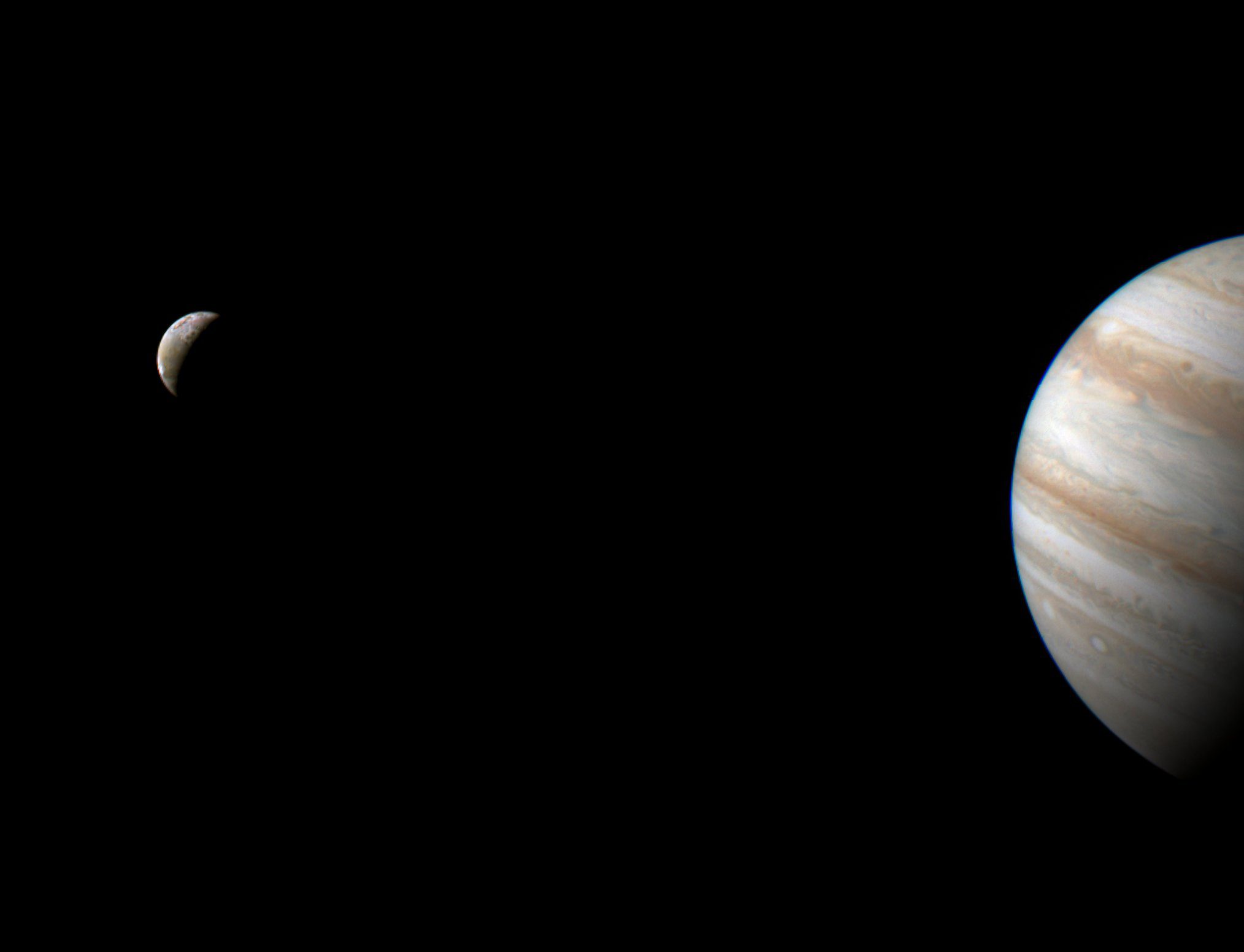NASA’s Juno has completed its 51st perijove, the closest passage to Jupiter in its elongated orbit around the gas giant. But it did not just get up close and personal to the planet on May 16, it also flew by Io, getting as close as 35,500 kilometers (22,060 miles), and taking its closest pictures yet of the volcanic moon.
This is the closest Juno has ever been to Io, but it’s nowhere near the records established by NASA’s Galileo which made multiple flybys of Io and other moons in the Jovian system. But with some citizen scientists processing the raw Juno data we are getting some excellent new views.
Juno’s mission is to study Jupiter but as the spacecraft entered its extended mission (now in its third year), the team has been more daring in exploring beyond the planet, with several flybys of three out of the four Galilean moons: Io, Europa, and Ganymede. The fourth, Callisto, is isolated further away from its moon neighbors. When it comes to tracking though, keeping an eye on Io matters as it can change quickly.
“Io is the most volcanic celestial body that we know of in our Solar System,” Scott Bolton, Juno principal investigator from the Southwest Research Institute in San Antonio, said in a statement.
“By observing it over time on multiple passes, we can watch how the volcanoes vary – how often they erupt, how bright and hot they are, whether they are linked to a group or solo, and if the shape of the lava flow changes.”
NASA/JPL-Caltech/SwRI/MSSS/Kevin M. Gill pic.twitter.com/KTO13VY6uY
The image above was processed by NASA JPL software engineer Kevin M. Gill on social media and on his Flickr page. It shows the moon more than half illuminated with its volcanic planes and lake, and enhanced at the terminator – the line between night and day – something that Gill recognizes as a peak. If you want more close-up pictures worry not. There are several more flybys of Io in the works in the coming months, and Juno will get closer and closer to it.
“We are entering into another amazing part of Juno’s mission as we get closer and closer to Io with successive orbits. This 51st orbit will provide our closest look yet at this tortured moon,” said Bolton.
“Our upcoming flybys in July and October will bring us even closer, leading up to our twin flyby encounters with Io in December of this year and February of next year, when we fly within 1,500 kilometers of its surface. All of these flybys are providing spectacular views of the volcanic activity of this amazing moon. The data should be amazing.”
More about Juno’s exploration of Io: https://t.co/QhqQNP8Cgy
Other recent images: https://t.co/Ql7aCQvRqY
📸 processed by Kevin M. Gill pic.twitter.com/QS4eWfzIi3
Juno has been orbiting Jupiter for more than 2,500 Earth days and it will continue to do so. Its orbit has been reduced and changed to allow new observations of not just the moon but also of Jupiter’s faint rings. Currently, the second extended mission ends in September 2025.
Source Link: Glorious New Images Of Jupiter’s Moon Io Are The Closest Yet From Juno
